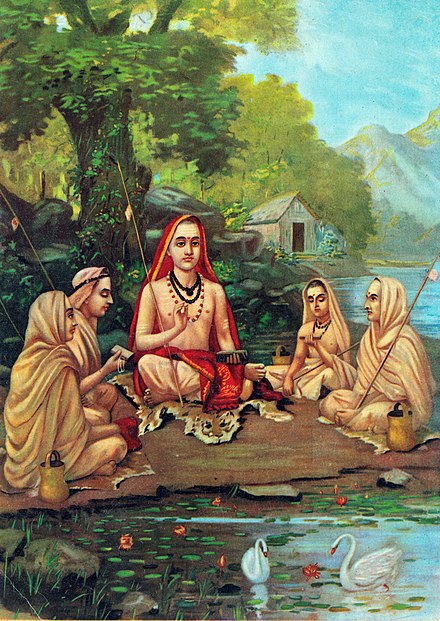Swami Niranjanananda Saraswati
Sannyasa is an ancient tradition representing a way of life. It is an order of people who have renounced the material world to experience the spiritual world. In the 8th century, the sannyasa order was restructured by Shankaracharya. However, the basic principles and ideals of the sannyasa lifestyle remained the same, namely, the pursuit of spiritual excellence. Although in the present day many people have altered the sannyasa system according to the prevalent living conditions and mentality, nevertheless there are people who maintain the sannyasa lifestyle as it was practised 5000 years ago.
The basis of the sannyasa lifestyle is the pursuit of spiritual excellence. This should not be understood as an intellectual attainment; spiritual excellence is not memorizing scriptures and literature, or becoming a good lecturer or philosopher. It is a state of experience where philosophy and performance are totally compatible, and this compatibility is seen in a balanced, positive expression in thought, word and action.
The drive to achieve spiritual excellence in sannyasa follows certain ideals. The first ideal is tyaga, renouncing the attachment to objects that we consider pleasant, or associate with as our own. Traditionally, it is said that the one who becomes a sannyasin dies a legal death. After taking sannyasa, one cannot lay claim to inheritance, money, property, name and fame. Sannyasa represents total disassociation from the social way of thinking.
In this context, not everybody is qualified to be a sannyasin. Today, despite thousands wearing geru and walking around with shaven heads, maybe one or two can be identified as sannyasins, who have that spirit and force of character. Very few people have the capacity to venture into and properly understand the basics of sannyasa life. The true sannyasa samskara exists in very few people. It is seen in those who are totally free from every kind of influence and interference, and remain true to the inspiration that brought them to spiritual life. When the spiritual samskaras are already active, at a certain point in life they take over. The mind and emotions have no role to play in the life of such a person.
When Swami Sivananda experienced that inner calling of sannyasa, he returned to India from Malaysia, landed in Chennai, his home town, yet did not see his family. He went from the ship to the railway station and then up north, without being influenced by any sentiment or emotion. The spiritual samskara had burnt up everything else.
Paramahamsaji says that from the day he left home, he never looked back. At the age of eight Shankaracharya left his home for the unknown, against all odds. At the age of sixteen Ramana Maharishi was sent to the market to buy vegetables, but he went to the railway station and bought a ticket for the next station.
The spiritual samskara is not compatible with the worldly samskara. Once the spiritual samskara ignites, the worldly conditioning of the mind is bypassed. The limited identification with the world in terms of those who are considered near and dear ceases to exist. Therefore, sannyasa has been declared as death.
Such a complete experience and expression of sannyasa does not automatically come about with initiation. Either one has that spiritual samskara or one has to go through a process of preparation to receive the spark of ignition. This is why traditionally sannyasa is given to those who have fulfilled all the gross desires in life.
When education, social and family responsibilities have been completed, when one has retired from active service and is free from social and family commitments, one is ready for sannyasa. This is the traditional movement from brahmacharya ashram (student life) to grihastha ashram (householder life) to vanaprastha ashram (retired life) to sannyasa ashram (spiritual life). The traditional approach states that only when the karmas are exhausted should one attempt to tread the path of sannyasa.
Most people who come into sannyasa life have to work to develop the culture, attitude and conditioning of sannyasa. This preparation is a long process during which one needs to educate oneself in the principles of sannyasa, found in the lives of those who have lived sannyasa, in the present age as well as in ancient times.

